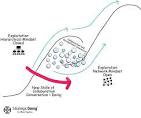Unlocking Potential: The Future of Recombinant Innovation

The Power of Recombinant Innovation
Innovation is the lifeblood of progress, driving advancements in technology, science, and society. One particularly potent form of innovation that has been gaining momentum in recent years is recombinant innovation.
Recombinant innovation involves the combination and reconfiguration of existing technologies, ideas, and methodologies to create new solutions and products. It is a process that thrives on cross-pollination, borrowing from different fields and disciplines to spark creativity and drive breakthroughs.
One of the key strengths of recombinant innovation is its ability to break down silos and foster collaboration between diverse sectors. By bringing together experts from various backgrounds, recombinant innovation encourages fresh perspectives and novel approaches to complex problems.
This approach has led to groundbreaking developments in areas such as biotechnology, artificial intelligence, and sustainable energy. By leveraging the collective knowledge and expertise of different fields, recombinant innovation has accelerated progress and opened up new possibilities for the future.
Furthermore, recombinant innovation promotes adaptability and resilience in the face of challenges. By combining existing resources in innovative ways, individuals and organisations can quickly respond to changing circumstances and find creative solutions to emerging issues.
As we navigate an increasingly interconnected world with complex problems that require multidimensional solutions, recombinant innovation offers a powerful tool for driving positive change. By embracing collaboration, creativity, and cross-disciplinary thinking, we can harness the full potential of recombinant innovation to shape a brighter future for all.
Understanding Recombinant Innovation: Key Concepts, Benefits, and Strategies for Success
- What is recombinant innovation?
- How does recombinant innovation differ from traditional innovation?
- What are the benefits of employing recombinant innovation?
- Can you provide examples of successful applications of recombinant innovation?
- How can individuals and organisations foster a culture of recombinant innovation?
What is recombinant innovation?
Recombinant innovation is a dynamic process that involves the creative combination and reconfiguration of existing technologies, ideas, and methodologies to generate novel solutions and products. This approach harnesses the power of cross-disciplinary collaboration, drawing on diverse fields and expertise to drive breakthroughs in various industries. By breaking down traditional boundaries and fostering a culture of experimentation and exploration, recombinant innovation encourages fresh perspectives and innovative problem-solving strategies. Ultimately, recombinant innovation enables individuals and organisations to adapt quickly to changing environments, leading to the development of cutting-edge solutions that address complex challenges in new and effective ways.
How does recombinant innovation differ from traditional innovation?
In exploring the distinction between recombinant innovation and traditional innovation, it is essential to consider their fundamental approaches. Traditional innovation typically involves the creation of entirely new ideas or technologies from scratch, often through extensive research and development processes. In contrast, recombinant innovation focuses on combining existing elements in novel ways to generate innovative solutions. By leveraging existing knowledge, technologies, and methodologies across different fields, recombinant innovation accelerates the creation of new products or processes. This approach promotes cross-disciplinary collaboration and the rapid adaptation of existing resources to address complex challenges, setting it apart from the more linear and isolated nature of traditional innovation processes.
What are the benefits of employing recombinant innovation?
Employing recombinant innovation offers a multitude of benefits that can propel progress and drive transformative change across various sectors. By combining existing technologies, ideas, and methodologies in novel ways, recombinant innovation fosters creativity and accelerates the development of innovative solutions to complex problems. This approach promotes cross-disciplinary collaboration, enabling experts from different fields to bring their unique perspectives and expertise to the table. The result is often breakthrough advancements in biotechnology, artificial intelligence, sustainable energy, and more. Recombinant innovation also enhances adaptability and resilience by empowering individuals and organisations to swiftly adapt to changing circumstances and find inventive ways to address emerging challenges. Ultimately, the benefits of employing recombinant innovation lie in its ability to inspire fresh thinking, drive collaboration, and unlock new possibilities for driving positive change in our rapidly evolving world.
Can you provide examples of successful applications of recombinant innovation?
Certainly! Successful applications of recombinant innovation can be seen across various industries and sectors. One notable example is the field of biotechnology, where researchers have combined genetic engineering techniques with data analytics to develop personalised medicine tailored to individual patients’ genetic profiles. Another example is in the realm of sustainable architecture, where designers are integrating principles from biology and engineering to create buildings that mimic natural ecosystems, promoting energy efficiency and environmental sustainability. These examples demonstrate the power of recombinant innovation in driving transformative solutions that address complex challenges and push the boundaries of what is possible.
How can individuals and organisations foster a culture of recombinant innovation?
To foster a culture of recombinant innovation, individuals and organisations can start by encouraging interdisciplinary collaboration and knowledge sharing. By bringing together experts from different fields and backgrounds, diverse perspectives can be integrated to spark creativity and drive innovative thinking. Creating an environment that values experimentation, risk-taking, and learning from failure is also crucial in promoting recombinant innovation. Embracing a culture that celebrates curiosity, open-mindedness, and continuous improvement can inspire individuals to explore new ideas and approaches, leading to the emergence of novel solutions and breakthrough innovations. Additionally, providing resources and support for cross-disciplinary projects and initiatives can help cultivate a culture where the exchange of ideas and the combination of diverse expertise are seen as essential components of driving progress and achieving success in the ever-evolving landscape of innovation.
